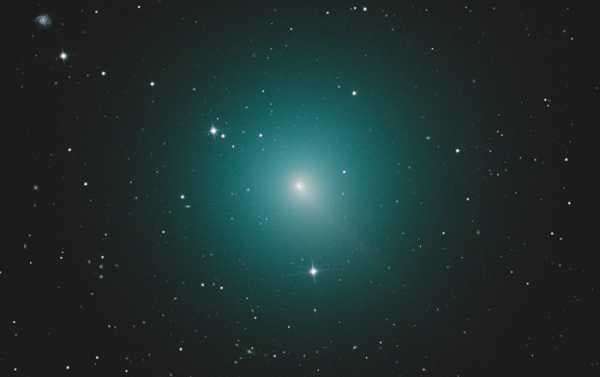
For those living under darker skies, Sunday night will reveal to the naked eye a green comet zooming by our Earth.
46P/Wirtanen, a fuzzy but bright green dot tracing an elliptical parabola between the orbit of Jupiter and the Sun, will be visible to the naked eye on Sunday night.
During its closest approach to the Earth in several centuries, the flyby of comet 46P/Wirtanen — named for astronomer Carl Wirtanen, who discovered it in 1948 — will coincide with the Geminids, one the most spectacular of our planet’s annual meteor showers.
The comet itself, to those who will be able to see it unaided, will appear as a small and amorphous green blob.
“The fuzziness is just because it’s a ball of gas,” noted University of Maryland astronomy department research scientist Tony Farnham on Saturday, cited by the New York Times
“You’ve got a one-kilometer solid nucleus in the middle, and gas is going out hundreds of thousands of miles,” said Farnham, who pointed out that the gases emitted by the comet reflect sunlight in predominantly green wavelengths.
Occasionally referred to as the ‘Christmas comet,’ 46P/Wirtanen’s orbit takes it speeding past our Sun every 5.4 years or so. The comet streaks by Earth typically every 11 years, but — like all celestial objects in motion — distances vary.
On Sunday’s closest approach to the Earth in centuries, the green comet will be some 30 times the distance between our planet and the moon, according to NASA astronomers, or a little over 7 million miles — a near miss by cosmological standards.
Coming as close as it is on Sunday, researchers and sky watchers around the globe will be closely observing the comet with all the scientific hardware they can bring to bear.
“The fact that it’s brighter means we can study a lot of different gas types that we normally can’t study because they’re too faint,” suggested Farnham, cited by Nytimes.com.
46P/Wirtanen will not again be this close to Earth for hundreds, or even thousands, of years, according to Space.com.
Charts provided by various educational institutions will assist skywatchers in finding the comet which, in cities or other brightly-lit areas, may require binoculars to find.
Armchair spacefans can observe a multitude of images of the approaching comet being uploaded to Space Weather, even as you read this.
Sourse: sputniknews.com






